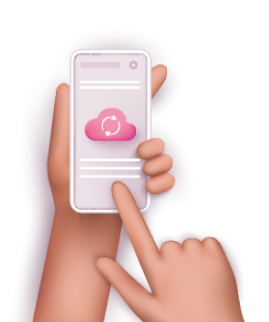This article originally appeared in Broadband Technology Report
While traditional metrics have their value, it’s important to supplement them with a layer of contextual intelligence that provides a more complete understanding of the customers’ experience.
Measuring the performance of customer care teams is crucial for understanding subscriber needs and what will better drive business growth. To this end, technical support staff and customer support managers play a crucial role in enhancing customer satisfaction and resolving end-user challenges. And to properly measure impact, it will be important to ensure that the metrics selected for this purpose are accurate and informative. Using the wrong data can lead to a lack of understanding of customer needs and hinder business growth. Consider the following commonly used metrics:
1. Average Handling Time
Measuring agent efficiency through average handling time (AHT) is a common practice in the telecommunications industry. The industry standard for AHT is 8 minutes and 48 seconds. The idea behind using AHT is that a lower time means more customers can be served. But one issue to overcome is that AHT fails to provide insight into whether the customer’s issue was resolved. It only measures the speed of customer care teams and not their outcomes. Therefore, when support teams are incentivized to hang up as soon as possible, they may prioritize moving on to the next call over effectively solving the current customer’s issue.
2. First Call Resolution
First call resolution (FCR) is a metric that measures the percentage of calls that are resolved after the first interaction. The industry considers an FCR rate between 70-79% to be good. This means that under 30% of customers need to call again to get their questions answered or issues resolved. However, FCR has its limitations. It may remain high when customers are calling with “easy” problems that have a known quick fix. With the growing complexity of connected devices and internet problems, it is becoming increasingly difficult to diagnose and resolve issues. Generic checks may not be sufficient. Additionally, a customer not calling back doesn’t necessarily mean that the root cause of an issue has been resolved. FCR also doesn’t factor in call abandonment or complex issues that can’t be resolved quickly.
3. Customer Satisfaction Score
Customer satisfaction score (CSAT) is a commonly used metric to measure agent performance by assessing how satisfied customers are with the support they received. This is usually done through post-call surveys, smile sheets, and other opt-in assessments. The industry standard for a good CSAT score is 75-84%. However, CSAT has limitations as it relies on voluntary customer feedback. This means that only highly satisfied or extremely unsatisfied customers are likely to provide feedback. This can result in a skewed sample of customers that doesn’t accurately represent the entire customer base. Additionally, if a customer just had a frustrating call with a support agent, they may be less likely to fill out a survey.
4. Calls Handled
The calls handled metric measures how many calls an agent can handle in a given period. It is similar to AHT as it aims to measure agent performance by speed and efficiency. From a business perspective, the more calls a single agent can handle, the fewer support representatives the organization needs to hire, making customer care less expensive overall. However, this metric doesn’t take into account the context of the calls or the quality of customer interactions. Additionally, with agents handling dozens of calls a day and a high risk of burnout, this metric may not be the best indicator of overall performance. It is important to shift focus from the number of calls handled to more important metrics such as customer retention, satisfaction, and business growth.
5. Abandonment Rate
An abandonment rate measures how many customers hang up before they speak to an agent, often due to long wait times. High abandonment rates can indicate that customers are getting frustrated and may lead to a loss of trust in the company. The industry standard for a good abandonment rate is under 2%, and anything under 5% is considered acceptable. However, the abandonment rate metric does not provide insight into why the customer hung up the phone. It could be due to frustration, finding the answer to their question online, or the issue resolving itself. In some cases, the technical teams might have proactively fixed an issue, and the customer may not have needed to contact the company at all – making this indicator of customer satisfaction and experience less reliable.
What metrics should you use?
It is essential to use metrics that accurately measure customer care performance, while taking into account the entire subscriber base and how subscribers are feeling about their internet at any given moment. While traditional metrics have their value, it’s important to supplement them with a layer of contextual intelligence that provides a more complete understanding of the customers’ experience under consideration of their activity and all affecting network conditions. Contextual intelligence enables a quality of experience (QoE) score that is an accurate representation of the customers’ subjective experience.
QoE scores are built by measuring network performance in relation to user activities and these activities’ requirements for ideal performance. A wide variety of network key performance indicators (KPIs) are mapped and monitored, providing intelligence about the performance of every network component (device, WiFi, customer premises equipment, WAN, or server), and how this performance potentially affects an active session. Understanding the ideal requirements for different applications such as video streaming, web conferencing, e-learning, or gaming ensures the QoE score accurately reflects the real-time experience for all customers, including those who do not make a call.
Having access to technology that provides a better QoE allows customer care representatives to:
- Benchmark: Compare QoE before and after a support call to measure the success of call resolution beyond calls handled and FCR
- Improve service levels: Add meaning to other customer care metrics and gain insight into issues such as call abandonment and effective resolution of customer concerns
- Focus on customer satisfaction: Shift the focus away from speed and prioritize overall customer experience and retention through proactive support.






